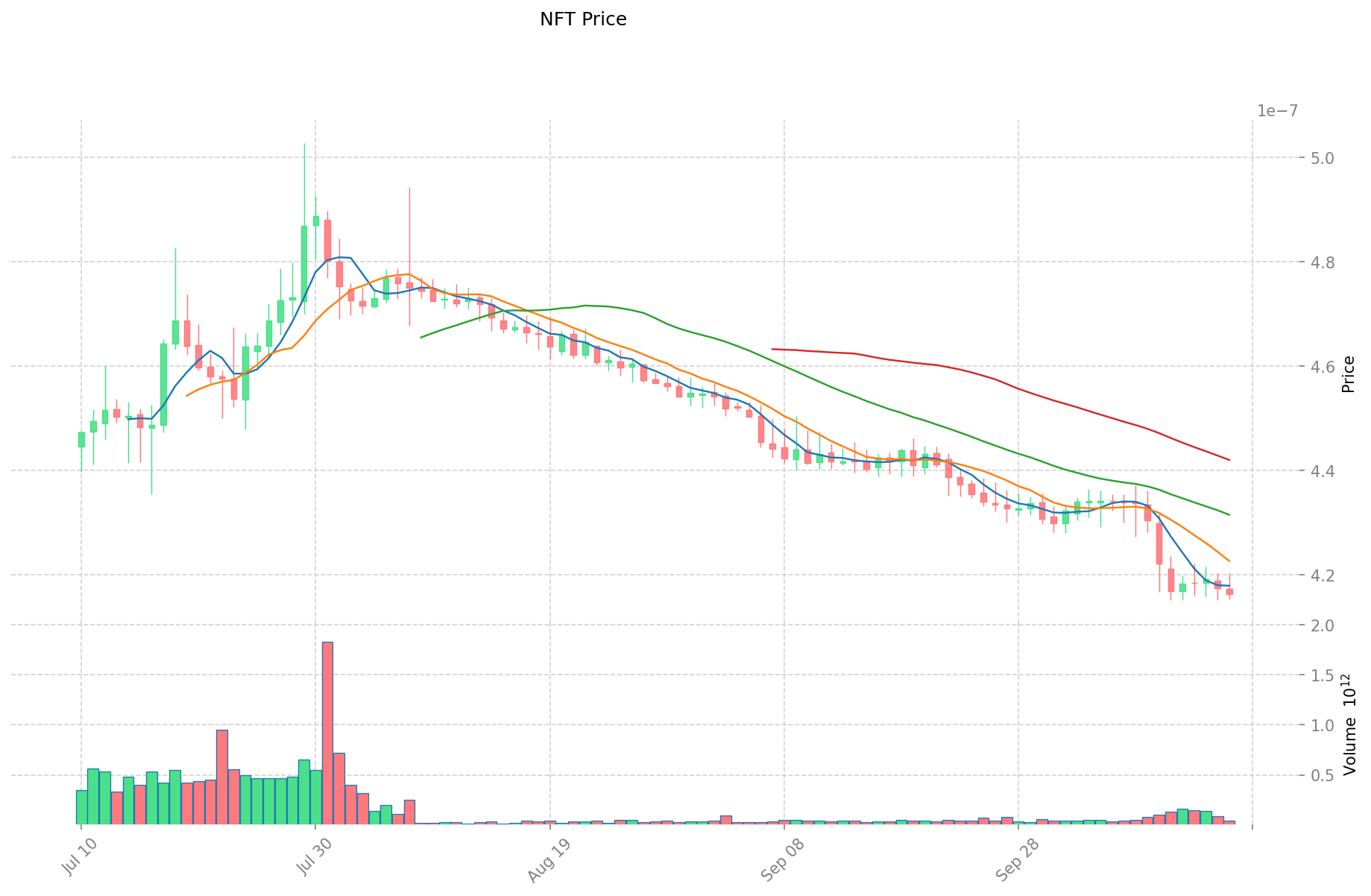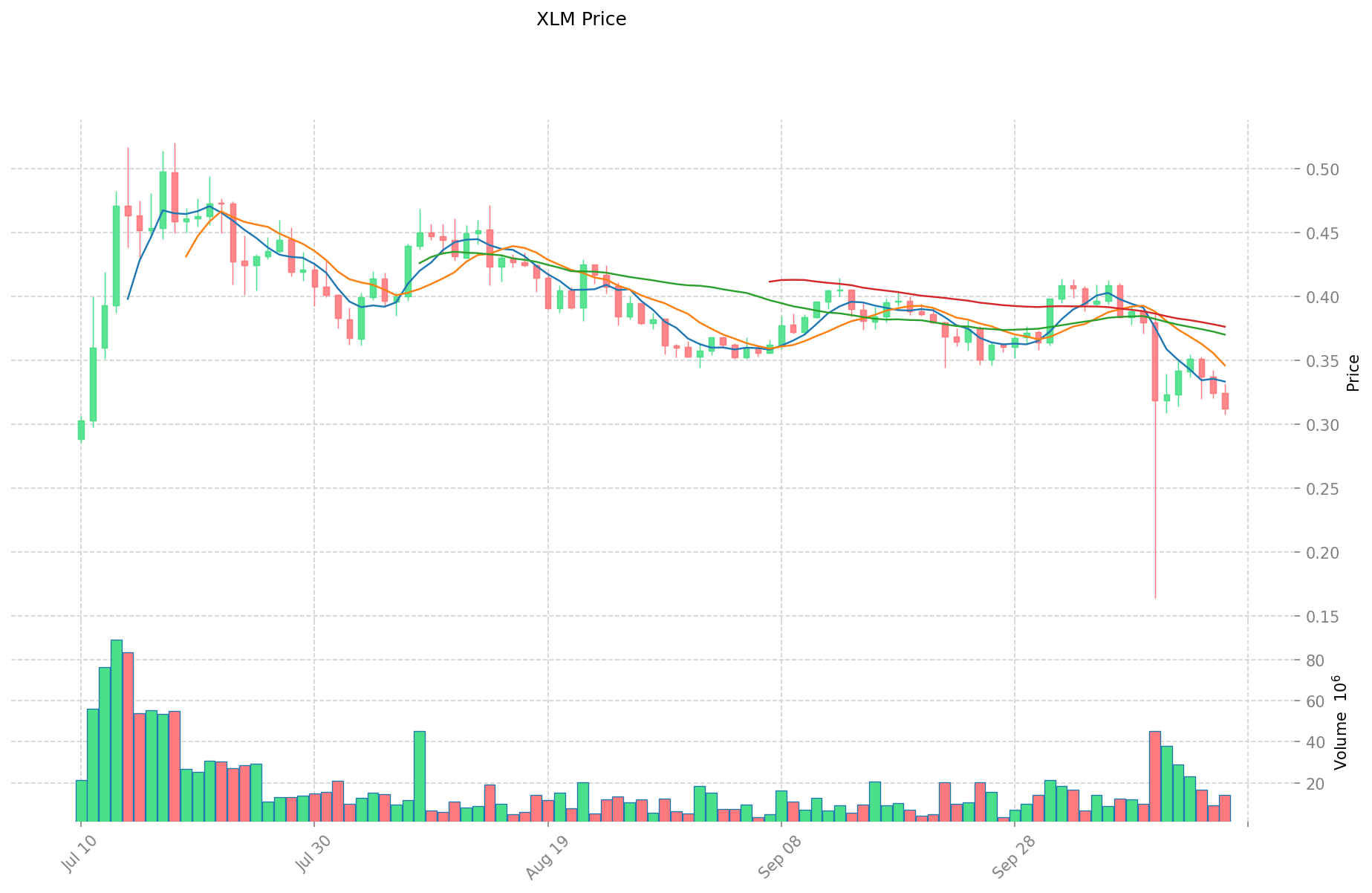NFT vs XLM: The Battle for Digital Asset Supremacy in the Crypto World
Introduction: NFT vs XLM Investment Comparison
In the cryptocurrency market, the comparison between APENFT (NFT) vs Stellar (XLM) has been an unavoidable topic for investors. The two not only show significant differences in market cap ranking, application scenarios, and price performance, but also represent different positioning in crypto assets.
APENFT (NFT): Launched in 2021, it has gained market recognition for its focus on NFT and blockchain transformation of top artworks.
Stellar (XLM): Introduced in 2014, it has been hailed as a decentralized gateway for transferring digital and fiat currencies, facilitating fast and low-cost transfers between banks, payment institutions, and individuals.
This article will provide a comprehensive analysis of the investment value comparison between APENFT and Stellar, focusing on historical price trends, supply mechanisms, institutional adoption, technical ecosystems, and future predictions, attempting to answer the question investors are most concerned about:
"Which is the better buy right now?"
I. Price History Comparison and Current Market Status
APENFT (NFT) and Stellar (XLM) Historical Price Trends
- 2021: APENFT reached its all-time high of $0.00000753 on September 5, 2021.
- 2023: APENFT hit its all-time low of $0.000000298737 on June 10, 2023.
- Comparative analysis: During this market cycle, APENFT dropped from its peak of $0.00000753 to a low of $0.000000298737, while XLM showed different price movements.
Current Market Situation (2025-10-17)
- APENFT current price: $0.0000004166
- Stellar current price: $0.31273
- 24-hour trading volume: NFT $17,209,136 vs XLM $4,499,388,362
- Market Sentiment Index (Fear & Greed Index): 28 (Fear)
Click to view real-time prices:
- Check NFT current price Market Price
- Check XLM current price Market Price


II. Core Factors Affecting Investment Value of NFT vs XLM
Supply Mechanism Comparison (Tokenomics)
- XLM: Fixed supply with no unlimited issuance, maintaining long-term scarcity to avoid inflation risk
- NFT: Uniqueness model with verified scarcity where each token represents a distinct digital asset
- 📌 Historical Pattern: Supply mechanisms drive price cycles differently - XLM's fixed supply creates predictable scarcity while NFT values are driven by uniqueness and rarity factors.
Institutional Adoption and Market Applications
- Institutional Holdings: XLM has gained traction through financial institution partnerships focused on cross-border payments
- Enterprise Adoption: XLM excels in cross-border payments and low-cost settlements, while NFTs have gained adoption in digital art, collectibles and brand engagement
- Regulatory Stance: XLM faces traditional cryptocurrency regulations while NFT regulatory frameworks are still developing in many jurisdictions
Technical Development and Ecosystem Building
- XLM Technical Upgrades: Fast transaction speeds (2-5 seconds) with minimal fees (0.00001 XLM), optimized for small payments and international transfers
- NFT Technical Development: Focused on digital ownership verification, marketplace infrastructure and interoperability
- Ecosystem Comparison: XLM prioritizes financial inclusion and payment solutions while NFT ecosystems center around digital collectibles, art markets and brand engagement platforms
Macroeconomic Factors and Market Cycles
- Performance in Inflationary Environments: XLM's fixed supply provides some hedge against inflation, while NFT performance varies by collection and demand dynamics
- Monetary Policy Impact: Interest rates affect XLM's broader crypto market correlation, while NFT markets show different cyclical patterns
- Geopolitical Factors: XLM benefits from cross-border payment demand and financial inclusion initiatives, particularly in emerging markets
III. 2025-2030 Price Prediction: NFT vs XLM
Short-term Prediction (2025)
- NFT: Conservative $0.000000387438 - $0.0000004166 | Optimistic $0.0000004166 - $0.000000470758
- XLM: Conservative $0.2256336 - $0.31338 | Optimistic $0.31338 - $0.3384504
Mid-term Prediction (2027)
- NFT may enter a growth phase, with estimated price range $0.000000380188535 - $0.000000653738822
- XLM may enter a steady growth phase, with estimated price range $0.28268254872 - $0.4086976608
- Key drivers: Institutional capital inflow, ETF, ecosystem development
Long-term Prediction (2030)
- NFT: Base scenario $0.000000506053154 - $0.000000712750922 | Optimistic scenario $0.000000712750922 - $0.000000748388468
- XLM: Base scenario $0.51158750125523 - $0.56218406731344 | Optimistic scenario $0.56218406731344 - $0.618402474044784
Disclaimer: This information is for educational purposes only and should not be considered as financial advice. Cryptocurrency markets are highly volatile and unpredictable. Always conduct your own research before making any investment decisions.
NFT:
| 年份 | 预测最高价 | 预测平均价格 | 预测最低价 | 涨跌幅 |
|---|---|---|---|---|
| 2025 | 0.000000470758 | 0.0000004166 | 0.000000387438 | 0 |
| 2026 | 0.00000048361011 | 0.000000443679 | 0.00000040818468 | 6 |
| 2027 | 0.000000653738822 | 0.000000463644555 | 0.000000380188535 | 11 |
| 2028 | 0.000000798929114 | 0.000000558691688 | 0.000000374323431 | 34 |
| 2029 | 0.000000746691442 | 0.000000678810401 | 0.000000414074345 | 63 |
| 2030 | 0.000000748388468 | 0.000000712750922 | 0.000000506053154 | 71 |
XLM:
| 年份 | 预测最高价 | 预测平均价格 | 预测最低价 | 涨跌幅 |
|---|---|---|---|---|
| 2025 | 0.3384504 | 0.31338 | 0.2256336 | 0 |
| 2026 | 0.355247568 | 0.3259152 | 0.218363184 | 4 |
| 2027 | 0.4086976608 | 0.340581384 | 0.28268254872 | 8 |
| 2028 | 0.539480912256 | 0.3746395224 | 0.221037318216 | 19 |
| 2029 | 0.66730791729888 | 0.457060217328 | 0.38393058255552 | 45 |
| 2030 | 0.618402474044784 | 0.56218406731344 | 0.51158750125523 | 79 |
IV. Investment Strategy Comparison: NFT vs XLM
Long-term vs Short-term Investment Strategy
- NFT: Suitable for investors focused on digital art, collectibles, and brand engagement potential
- XLM: Suitable for investors interested in cross-border payment solutions and financial inclusion
Risk Management and Asset Allocation
- Conservative investors: NFT: 10% vs XLM: 90%
- Aggressive investors: NFT: 30% vs XLM: 70%
- Hedging tools: Stablecoin allocation, options, cross-currency portfolios
V. Potential Risk Comparison
Market Risk
- NFT: High volatility, dependent on specific collection popularity and overall NFT market trends
- XLM: Subject to general cryptocurrency market fluctuations and adoption rates in financial sector
Technical Risk
- NFT: Scalability issues, marketplace stability
- XLM: Network congestion during high-volume periods, potential security vulnerabilities
Regulatory Risk
- Global regulatory policies may impact both differently, with NFTs facing evolving legal frameworks and XLM subject to traditional cryptocurrency regulations
VI. Conclusion: Which Is the Better Buy?
📌 Investment Value Summary:
- NFT advantages: Unique digital asset representation, potential for high returns in specific collections
- XLM advantages: Established cross-border payment solution, partnerships with financial institutions
✅ Investment Advice:
- New investors: Consider a small allocation to XLM for exposure to cryptocurrency payments sector
- Experienced investors: Diversify with both XLM and carefully selected NFT projects
- Institutional investors: Focus on XLM for its potential in cross-border payments and financial inclusion initiatives
⚠️ Risk Warning: The cryptocurrency market is highly volatile. This article does not constitute investment advice. None
VII. FAQ
Q1: What are the main differences between APENFT (NFT) and Stellar (XLM)? A: APENFT focuses on NFT and blockchain transformation of artworks, while Stellar is a decentralized platform for fast, low-cost transfers between banks, payment institutions, and individuals.
Q2: Which has shown better price performance historically? A: Historically, XLM has shown more stable price performance, while NFT experienced higher volatility, reaching an all-time high in September 2021 before a significant drop.
Q3: How do their supply mechanisms differ? A: XLM has a fixed supply to maintain long-term scarcity, while NFT follows a uniqueness model where each token represents a distinct digital asset.
Q4: What are the key factors driving institutional adoption for each? A: XLM has gained traction through partnerships focused on cross-border payments, while NFT adoption is driven by digital art, collectibles, and brand engagement opportunities.
Q5: How do their ecosystems compare? A: XLM's ecosystem prioritizes financial inclusion and payment solutions, while NFT ecosystems center around digital collectibles, art markets, and brand engagement platforms.
Q6: What are the long-term price predictions for NFT and XLM? A: By 2030, NFT is predicted to reach $0.000000506053154 - $0.000000748388468, while XLM is expected to reach $0.51158750125523 - $0.618402474044784 in the base to optimistic scenarios.
Q7: How should investors allocate their portfolios between NFT and XLM? A: Conservative investors might consider 10% NFT and 90% XLM, while more aggressive investors might opt for 30% NFT and 70% XLM, depending on risk tolerance and investment goals.
Share
Content